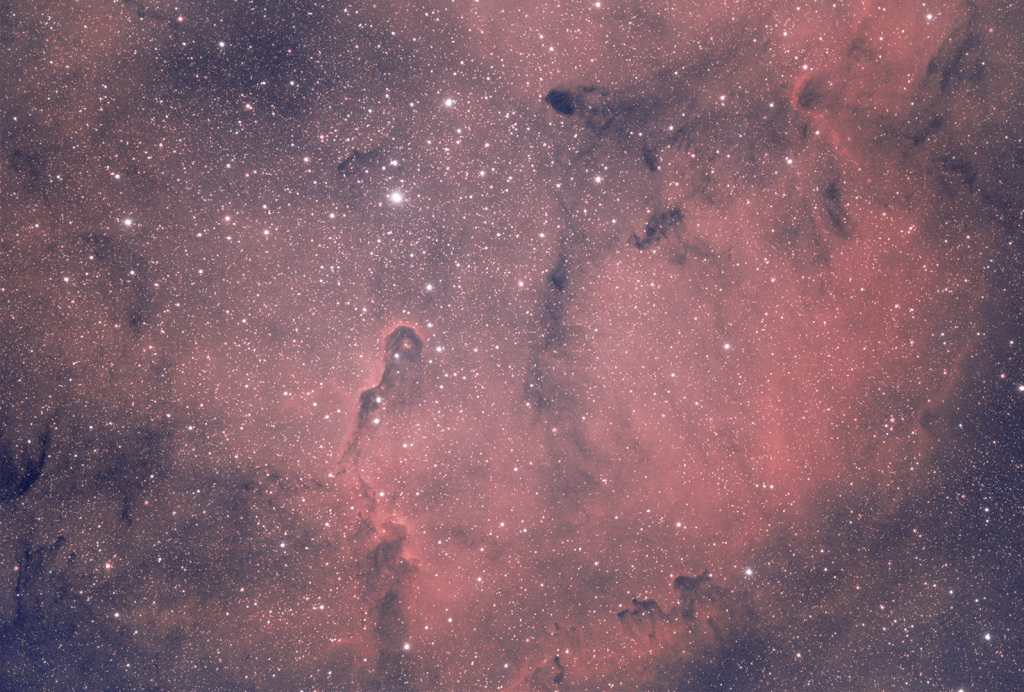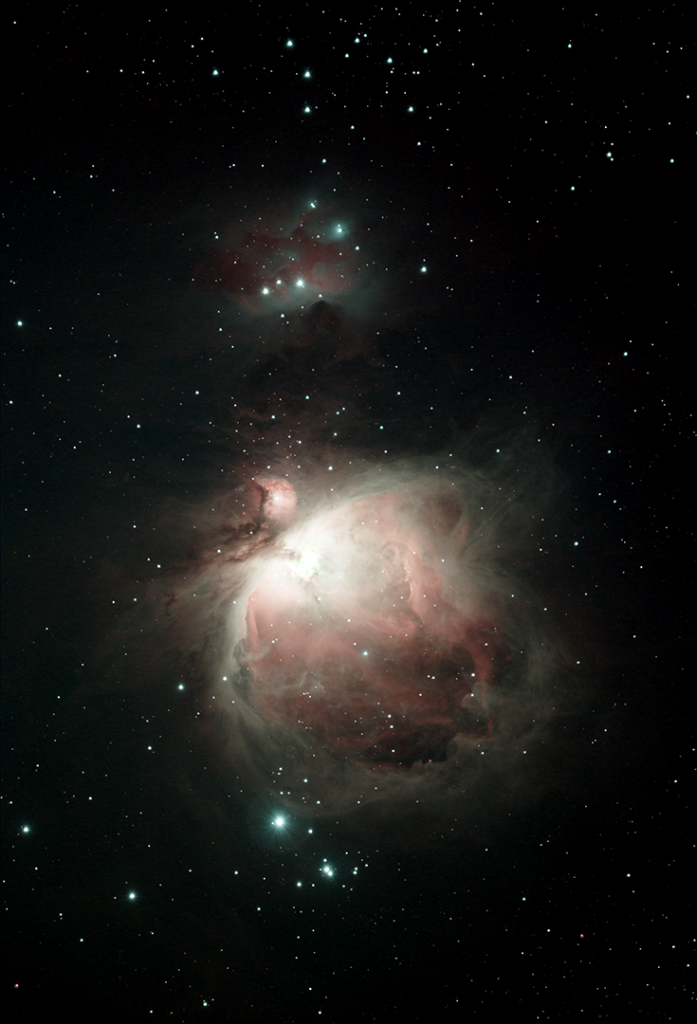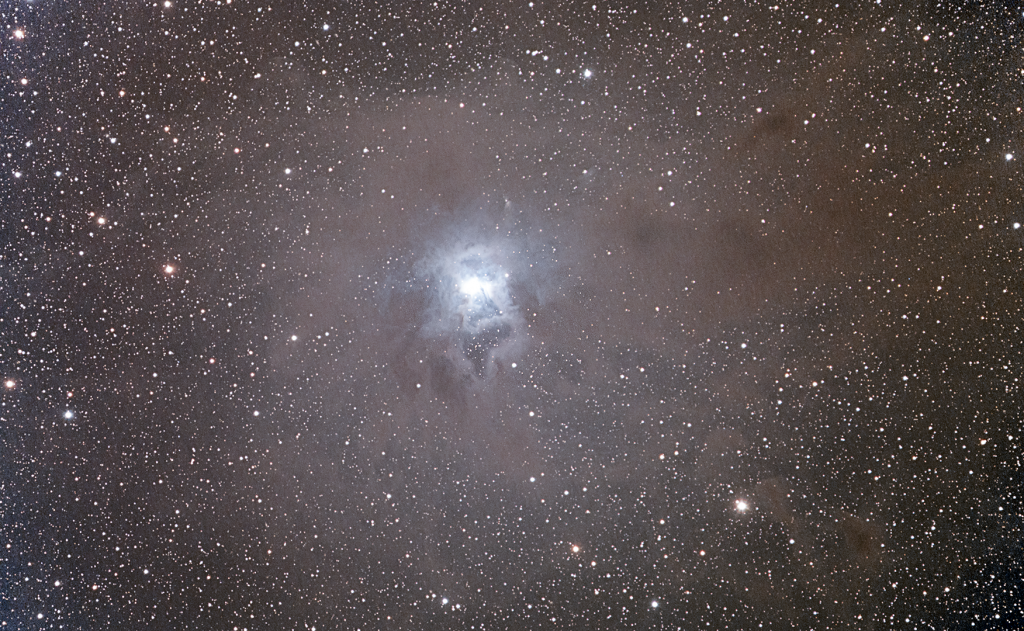I’ve already posted a couple images from Friday November 7, here is the last one. This is the Elephant’s Trunk Nebula (or IC 1396). I’ve been trying to make this presentable, it needs more data but it’s my first attempt at it. This was a total of 50 minutes integration with the 11″ and Hyperstar. That’s the trunk coming up from the bottom. I’ll keep working on it.



